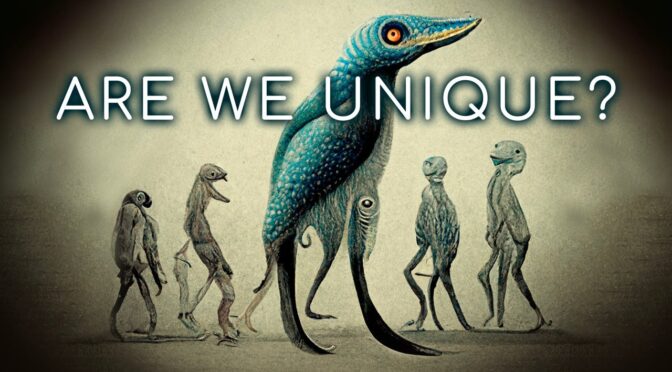This article is based on a video titled “Would Life Really Develop Differently on Another Planet? | Convergent Evolution” by Astrum. The video delves into the fascinating subject of how life might develop on other planets, particularly focusing on the principle of “Form Follows Function” and the concept of convergent evolution.
Contents
- The Principle of Form Follows Function
- Convergent Evolution and Its Implications
- Adaptations to Varied Planetary Conditions
- Civilizational Development and Resource Utilization
- Alternative Models of Civilizational Progress
- The Mirror of Alien Life
- The video
The Principle of Form Follows Function
The video begins by emphasizing that life as we know it exists only on Earth, but that doesn’t rule out the possibility of life elsewhere in the universe. It introduces the principle of “Form Follows Function,” which suggests that the shape and structure of an organism are optimized for its specific functions (this is where natural selection plays a significant role). For example, the human body is an optimized system with specialized organs and appendages that serve specific purposes, such as hands for grasping and a digestive system for nutrient absorption.
Convergent Evolution and Its Implications
Convergent evolution is a phenomenon where different species independently evolve similar traits due to similar environmental pressures. For instance, eyes have evolved about 40 times independently on Earth, and both bats and birds have developed wings for flight. This suggests that if conditions on another planet are similar to Earth, life forms there might also evolve similar traits. The video posits that aliens might not look exactly like us but could have features like fingers for tool manipulation and large brains for complex thinking (and perhaps they might not be hairy if they have developed clothing).
Adaptations to Varied Planetary Conditions
Life forms on planets with different environmental conditions would likely have different adaptations. For example, on a low-gravity planet, organisms might grow taller due to the reduced energy cost of lifting nutrients. On a high-gravity planet, organisms might be stockier and possibly aquatic to counteract the gravitational pull. Similarly, on a planet farther from its star, aliens might have larger eyes to capture more light or rely on echolocation in dim conditions.
Civilizational Development and Resource Utilization
The video also discusses how civilizations might develop based on their environmental conditions and resource availability. It introduces the Kardashev scale, which classifies civilizations based on their energy utilization. Type 1 civilizations can utilize all the energy available on their planet, while Type 2 and Type 3 civilizations can harness the energy of their star and galaxy, respectively. The video suggests that any advanced alien civilization would likely be driven by a quest for more resources and space, either through diplomacy or aggression.
Alternative Models of Civilizational Progress
While the Kardashev scale focuses on energy utilization, other models like Carl Sagan’s scale classify civilizations based on the unique information they possess. This model allows for the possibility of civilizations that focus on internal development or virtual spaces rather than physical expansion. According to Sagan’s scale, we are at about a type J civilization, knowing approximately 10131013 bits of unique information as of 1973 (though this number has likely increased since then).
The Mirror of Alien Life
The video concludes by suggesting that if we ever encounter an alien civilization, it might be like looking into a mirror, reflecting similar evolutionary and civilizational paths. This could make them somewhat understandable and possibly even relatable to us, despite the vast differences that are bound to exist.

